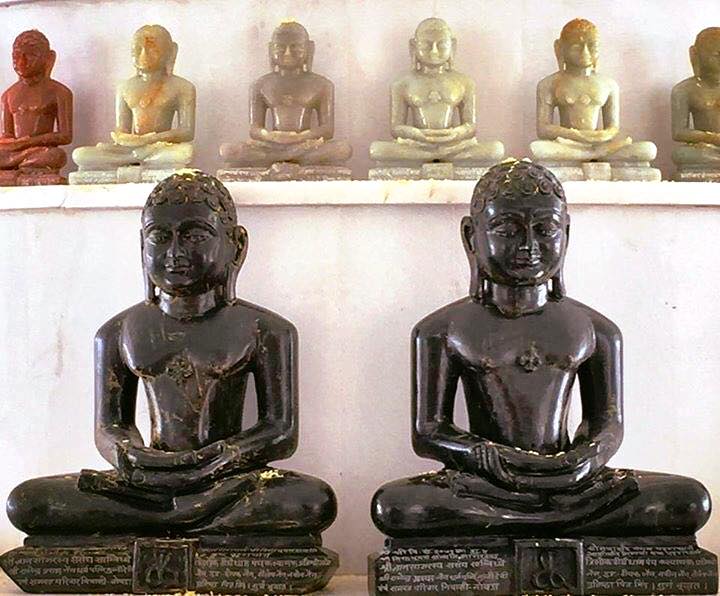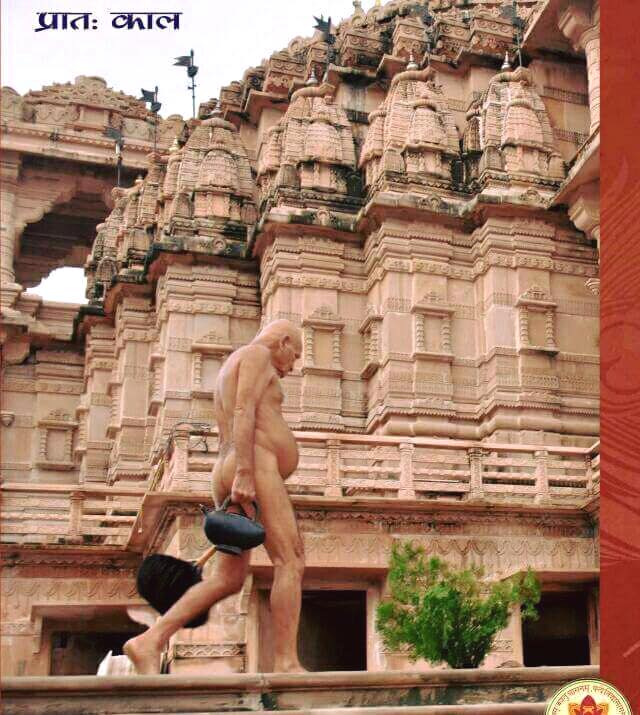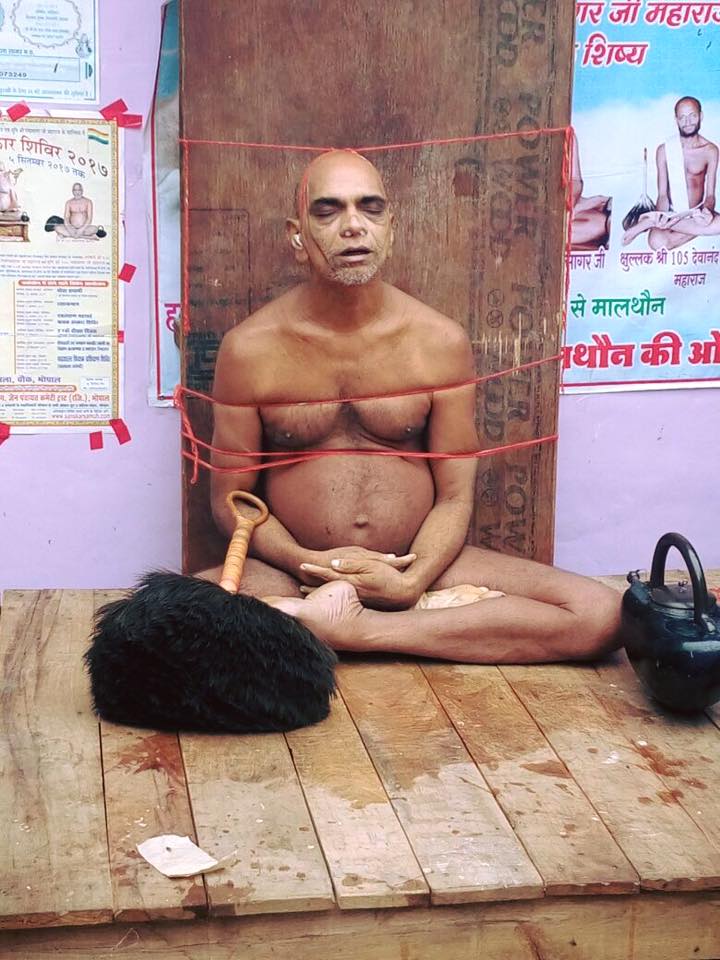Update
1. #Soul (#Jiva): All living beings are called Soul/Jivas. A soul or atma bound by a body is called jiva or an embodied soul. The soul and body are two different entities. The soul can not be reproduced. It is described as a sort of energy which is indestructible, invisible, and shapeless. Jainism divides jivas into five categories ranging from one-sensed beings to five-sensed beings. The body is merely a home for the soul. At the time of death, the soul leaves the body to occupy a new one. Tirthankara have said that the soul has an infinite capacity to know and perceive. This capacity of the soul is not experienced in its present state, because of accumulated karmas.
2. #Non-living matter (Ajiva): Anything that is not a soul is called Ajiva. Non-living matter does not have consciousness. Jainism divides Non-living matter in five broad categories: Dharmastikay (Medium of motion), Adharmastikay (Medium of rest), Akashastikay (Space), Pudgalastikay (#Matter), and Kala (Time).
3. Influx of #karmas (Asrava): The influx of karman particles to the soul is known as Asrava. It is caused by wrong belief, vowlessness (observing no vows), passions, negligence, and psychophysical activities. Such an influx of karmas is facilitated by mental, verbal, or physical activities. the two main cause of influx of karmas are...
A. Results of good deeds (Punya): By undertaking these wholesome activities, we acquire punya or good karmas. Such activities are: providing food or other items to the needy people, doing charity work, propagating religion, etc. When punya matures, it brings forth worldly comfort and happiness.
B. Results of bad deeds/Sin (Pap): By undertaking bad activities, we acquire pap or bad karmas. Such activities are: being cruel or violent, showing disrespect to parents or teachers, being angry or greedy and showing arrogance or indulging in deceit. When pap matures, it brings forth worldly suffering, misery, and unhappiness.
4. Bondage of karmas (Bandh): This refers to the actual binding of karman particles to the soul. Bandh occurs, when we react to any situation with a sense of attachment or aversion.
5. Stoppage of karmas (Samvar): This is the process by which the influx of karman particles is stopped. This is achieved by observing samiti (carefulness), gupti (control), ten fold yati-dharma (monkshood), contemplating the twelve bhavanas (mental reflections), and parishaha (suffering).
6. Eradication of karmas (Nirjara): The process by which we shed off karmas is called nirjara. Karmas can be shed off either by passive or active efforts. When we passively wait for karmas to mature and give their results in due time, it is called Akam Nirjara. On the other hand, if we put active efforts for karmas to mature earlier than due time, it is called Sakam Nirjara. Sakam Nirjara can be achieved by performing penance, repentance, asking for forgiveness for the discomfort or injury we might have caused to someone, meditation, etc.
7. #liberation (#Moksha): When we get rid of all the karmas, we attain liberation or moksha.
Now, let us use a simple analogy to illustrate these Tattvas. There lived a family in a farm house. They were enjoying the fresh cool breeze coming through the open doors and windows. The weather suddenly changed, and a terrible dust storm set in. Realizing it was a bad storm, they got up to close the doors and windows. By the time they could close all the doors and windows, much dust had entered the house. After closing all of the doors and windows, they started cleaning away the dust that had come into the house.
We can interpret this simple illustration in terms of 7 Tattvas as follows:
1) Soul/Jivas are represented by the people.
2) Non-living matter/Ajiva is represented by the house.
3) Influx of karmas/Asrava is represented by the influx of dust through the doors and windows of the house which is similar to the influx of karman particles to the soul. It is divided into 2 parts...
a) Results of good deeds/Punya is represented by worldly enjoyment resulting from the nice cool breeze.
b) Results of bad deeds/Pap is represented by worldly discomfort resulting from the sand storm, which brought dust into the house.
4) Bondage of karmas/Bandh is represented by the accumulation of dust in the house, which is similar to bondage of karman particles to the soul.
5) Stoppage of karmas/Samvar is represented by the closing of the doors and windows to stop the dust from coming into the house, which is similar to the stoppage of influx of karman particles to the soul.
6) Eradication of karmas/Nirjara is represented by the cleaning up of accumulated dust from the house, which is similar to shedding off accumulated karmic particles from the soul.
7) Liberation/Moksha is represented by the clean house, which is similar to the shedding of all karmic particles from the soul.
*Tirthankara [ victor, winner or conqueror, literally meaning 'ford-maker', who (re-)establishes the religion and the four fold order/community of ascetics and lay followers.
--- www.jinvaani.org @ Jainism' e-Storehouse ---
#Jainism #Jain #Digambara #Nirgrantha #Tirthankara #Adinatha #MahavirBhagwan #Rishabhdev #AcharyaVidyasagar #LordMahavira #Ahinsa #Nonviolence
 Source: © Facebook
Source: © Facebook
Update
#Best_Article #must_Read अपने गुरु के समान ही आचार्य श्री विद्यासागर जी भी जीवन का अंतिम लक्ष्य *समाधि मरण*की सिद्धि हेतु कृतसंकल्प है। इसका स्पष्ट चित्रण संघस्थ ज्येष्ठ साधु मुनि श्री योग सागर जी की आचार्य श्री जी से हुई चर्चा से स्पष्ट हो जाता है!! #AcharyaVidyasagar #AcharyaGyansagar
आचार्य श्री विद्यासागर जी का भोपाल मध्यप्रदेश चातुर्मास सन 2016 के बाद डोंगरगढ़ राजनांदगांव छत्तीसगढ़ तक का लंबा बिहार हुआ इस दौरान आचार्य श्री जी अधिक कमजोर दिखने लगे थे,डोंगरगढ़ पहुंचने से 1 दिन पूर्व 5 अप्रैल 2017को ईर्यापथ भक्ति के पश्चात मुनि श्री योगसागर जी ने आचार्य श्री जी से कहा- *आपने अपने शरीर को पहले से ज्यादा बुड्ढा (वृद्ध) बना लिया है, पीछे से देखें तो ऐसा लगता है जैसे 80 साल के बुड्ढे जा रहे हैं* संघस्थ साधुओं ने भी उनका समर्थन किया। तब *आचार्य जी बोले तुम लोग मेरी भी तो सुनो मैं कहां कह रहा हूं कि मैं 80 का नहीं हूं I am running seventy । इसमें 70 से लेकर 80 तक का काल आ जाता है*
*आचार्य श्री जी ने आगे कहा - सल्लेखना के लिए 12 वर्ष क्यों बताएं मूलाचार प्रदीप,भगवती आराधना में क्या पढ़ा है,तैयारी तो करनी ही होगी मेरे पास जितना अनुभव है उसी आधार पर तथा गुरुजी से जो मिला उसी अनुभव के आधार पर तैयारी करनी होगी।*
*अपने पास *आगम चक्खू साहू*है *मैं उसी के अनुसार अपने शरीर को सल्लेखना के लिए तैयार कर रहा हूं, वैसे ही साधना चल रही है बहुत दुर्लभ है यह सल्लेखना।*
*आप लोग इसको अच्छे तरीके से समझें, मिलेक्ट्री की तरह बस प्रत्येक समय तैयार रहो। i am ready to face it*
*बस धीरे-धीरे उस ओर बढ़ते जाना है सतत अभ्यास से ही इस दुर्लभ लक्ष्य को साधा जा सकता है। प्रभु से यही प्रार्थना करता हूं कि एकत्वभावना का चिंतन करते हुए आयु की पूर्णता हो।*
इससे अधिक गुरु एवं शिष्य की क्षमता का उदाहरण और क्या हो सकता है *यथा गुरु तथा शिष्य, कैसा दुर्लभ संयोग*
*शिक्षा - हमारे जीवन का अंत न जाने कब आ जाए,इसलिए जैसे आचार्य श्री जी सल्लेखना के प्रति हर समय जाग्रत हैं, वैसे ही हम अपने जीवन के प्रत्येक क्षण में जाग्रत रहें, सतर्क रहें और एक ना एक दिन उस परम समाधि अवस्था को प्राप्त करें।
 Source: © Facebook
Source: © Facebook
News in Hindi
आचार्य श्री विद्यासागर जी महामुनिराज के परम शिष्य मुनि श्री स्वभाव सागर जी महाराज का कल सल्लेखना पूर्वक समाधि मरण हुआ #AcharyaVidyasagar
सुबह सामायिक, फिर आचार्य भक्ति, देव बन्दना, फिर जंगल के रास्ते तत्वचर्चा चल रही थी,तभी एक स्थान पर बैठे, और फिर मुनि पुराण सागर और छुल्लक देवानंद सागर जी ने कहा कोई तकलीफ हो रही तो महाराज जी बोले ओम नमः आचार्य श्री को नमोस्तु, गलतियों की छमा, पुरे संघ से छमा और ओम नमः ओम नमः ओम नमः और णमोकार की ध्वनि सभी साथ में बोल रहे थे, तभी मुनि श्री स्वभाव सागर जी ने इस नश्वर देह का त्याग कर दिया ।
एक सरल, अपने नाम के अनुरूप स्वभाव बाले, बहुमुख प्रतिभा के धनी, बहु स्वाध्याय परक, एकांत प्रिय, उत्कृष्ट साधक के धनी, नन्नी देवरी (सागर) में जन्मे मुनिश्री स्वभाव सागर जी संसार सागर से सिद्धशिला की और महाप्रयाण कर गये।
मेरी और से स्वाभाव सागर जी महामुनिराज के पावन चरणों में कोटिशा: बारम्बार नमोस्तु और उनके चरणों में विनयांजलि अर्पित करता हू!! 🙏🏻🙏🏻🙏🏻🙏🏻🙏🏻
अमित सिघई (वास्तु) परिवार
 Source: © Facebook
Source: © Facebook
